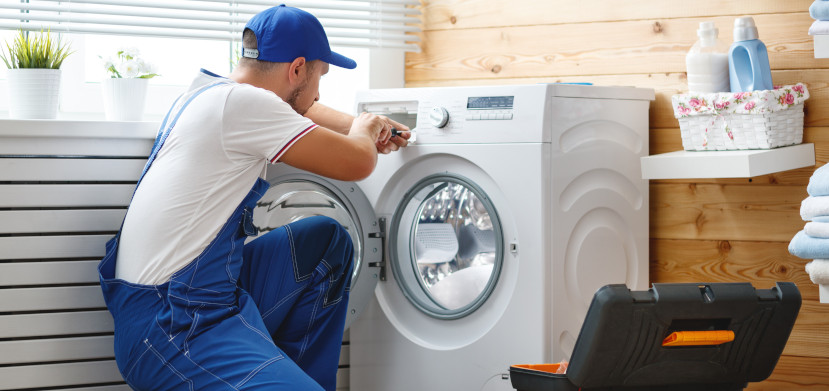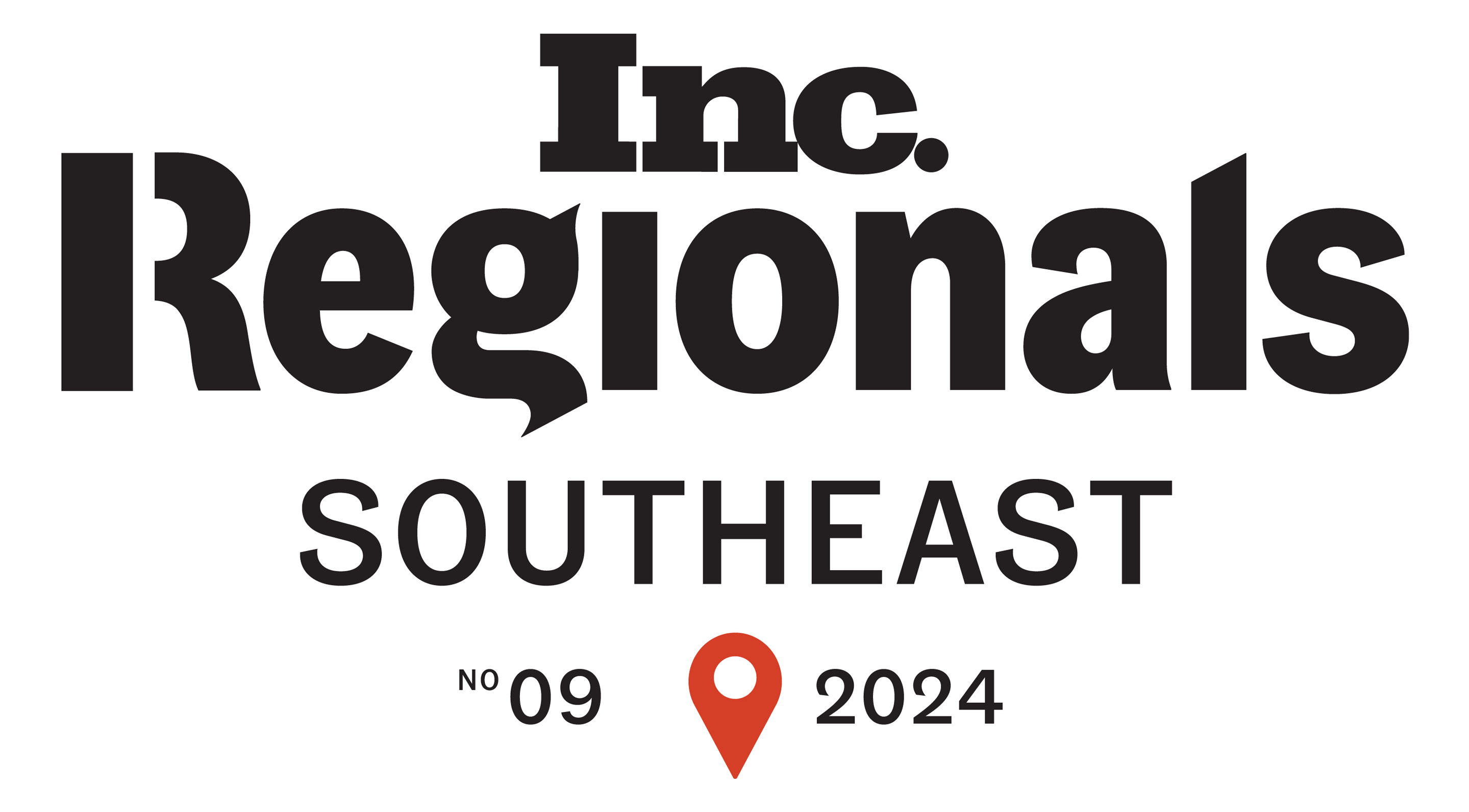Want to know the secret sauce for customer loyalty? It's not just about making a great product. It's about what happens after the sale - when things go wrong. That's where product warranties come in. They may seem like just another cost of doing business, but savvy manufacturers know better. They know that warranties are a powerful tool for building unbreakable bonds with customers. Here's how to turn your warranty program into a customer loyalty machine.
1. Show Them You Stand Behind Your Product
The Power of a Strong Warranty
In a world where consumers have more choices than ever, a strong warranty can be a powerful differentiator. It shows that you're not just another fly-by-night company looking to make a quick buck. You're in it for the long haul, and you stand behind your product.
Think about it from your customer's perspective. They're taking a risk every time they buy something new. They're trusting that it will work as advertised and last a reasonable amount of time. A solid warranty mitigates that risk, giving them peace of mind and confidence in their purchase.
What Makes a Great Warranty?
First understand that the Magnuson-Moss Warranty Act passed by the US congress in 1975 does not require manufacturers to offer a product warranty. It only requires manufacturers that choose to warranty their products, to do so in writing, and in a way so that consumers can compare products and their warranties to increase competition. Warranties ultimately are a competitive differentiator. So, make it count.
So what separates a great warranty from a mediocre one? Here are a few key elements:
- Clear, transparent coverage: Your warranty should be in writing and be clear in terms of what is and is not covered.
- Comprehensive coverage: Your warranty should cover all the major components of your product, not just a select few. If something goes wrong, your customer should feel confident that they're covered.
- Reasonable duration: The length of your warranty sends a signal about the quality of your product. If you only offer a 30-day warranty, customers may wonder what you're hiding. A 90-day to one-year warranty are a bare minimum these days, depending on the product and longer is often better.
- No-hassle claims: The last thing a customer wants is to jump through hoops to get their product fixed or replaced under the warranty terms. Your warranty should make the claims process as simple and painless as possible.
- Transferability: If your product has a long lifespan, consider making your warranty transferable to a new owner, particularly for items like home systems such as HVAC that stay in a location regardless of the owner.. This can add resale value and make your product more attractive to potential buyers.
- Offer extended warranty options: extended warranties provide buyers with even more peace-of-mind, as insured extended warranties, administered by licensed third party administrators, cover the costs of repairs after the OEM warranty expires.
Communicate Your Warranty Clearly
Of course, even the best warranty is useless if your customers don't know about it. That's why it's critical to communicate your warranty terms clearly and prominently.
Don't bury your warranty information in the fine print. Put it front and center on your website, in your product literature, and on your packaging. Make it easy for customers to find and understand.
And don't be afraid to use your warranty as a selling point. If you've got a best-in-class warranty, shout it from the rooftops. Use it in your marketing materials and sales pitches. Let your customers know that you stand behind your product like no one else.
And, don’t forget the power of extended warranties which complement your product warranties. Extended warranties can protect your customer’s wallets from the costs of unexpected repairs for many years after your warranty expires. And, guess what happens when they are happy with your product for many years? They come back to you for the replacement! Don’t forget to implement an extended warranty program!

The Bottom Line
At the end of the day, a strong warranty is about more than just protecting your customers. It's about showing them that you care about their satisfaction and the long-term performance of your product.
By offering a comprehensive, straightforward warranty and standing behind it, you'll build trust, credibility, and loyalty that will pay dividends for years to come. It's a powerful way to differentiate your brand and show your customers that you're in it for the long haul.
Make Your Warranty Terms Crystal Clear
Confusing legalese is the enemy of trust. If your customers need a law degree to understand your warranty, you're doing it wrong.
Keep it simple, straightforward, and easy to find. Spell out what's covered, what's not, and for how long. Use plain language that an 11-year-old could understand.
The clearer your terms, the more confident your customers will feel. They'll know exactly what to expect if they need to make a claim.
2. Make Claims a Breeze
A warranty is only as good as the claims process behind it. If making a claim is a hassle, your customers will remember - and not in a good way.
Your goal is to make the process as painless as possible. That means:
- Offering multiple ways to file a claim (phone, email, online)
- Responding quickly to acknowledge the claim
- Keeping the customer updated on the status
- Resolving the issue promptly and professionally
Every interaction is a chance to win a customer's loyalty. Make it count.
The Cost of a Clunky Claims Process
A clunky, confusing claims process can do more damage than you might think. It's not just about the immediate frustration it causes your customers. It's about the long-term impact on your brand reputation and customer loyalty.
Think about it: when a customer needs to make a claim, they're already in a stressful situation. Something they bought from you isn't working as it should. They're frustrated, possibly even angry. The last thing they want is to jump through hoops just to get the problem resolved.
If your claims process is difficult to navigate, slow, or just plain unhelpful, you're adding fuel to the fire. You're taking an already negative experience and making it worse. That customer is likely to remember that experience for a long time - and they're likely to share it with others.
The Benefits of a Smooth Claims Experience
On the flip side, a smooth, efficient claims experience can turn a negative situation into a positive one. When a customer is able to easily file a claim, gets a quick response, and has their issue resolved promptly, they feel heard and valued.
That kind of positive experience sticks with them. They remember that you were there for them when they needed you. They feel good about their decision to do business with you. And they're more likely to do business with you again in the future.
A great claims experience can even turn an unhappy customer into a loyal brand advocate. If you go above and beyond to make things right, that customer is likely to sing your praises to anyone who will listen.
How to Streamline Your Claims Process
So how do you make sure your claims process is as smooth and painless as possible? Here are a few key strategies:
- Offer multiple channels: Give your customers options for how they can file a claim. Some may prefer to call and speak to a person, while others may prefer the convenience of an online form or email. The more options you offer, the easier it is for customers to reach out.
- Respond quickly: When a customer files a claim, they want to know that you've received it and are working on a solution. Make sure your team and your technology is equipped to provide a quick initial response, even if it's just to say, "We got your message and we're looking into it." That acknowledgement can go a long way in easing a customer's anxiety.
- Communicate proactively: Don't make your customers chase you down for updates. Proactively communicate the status of their claim, even if there's no new information to share. A simple "We're still working on it" can reassure the customer that they haven't been forgotten.
- Resolve issues quickly: Of course, the ultimate goal is to resolve the issue as quickly as possible. Empower your team to make decisions and offer solutions without a lot of red tape. The faster you can get the customer back up and running, the better.
Train Your Team, and your Partners, to Be Claims Champions

Of course, streamlining your process is only half the battle. You also need to make sure your warranty team and that of your partner, have the skills, knowledge and technology to handle claims effectively.
That means providing thorough training on your products, your policies, and your claims process. It means equipping them with the tools and resources they need to troubleshoot issues and find solutions. It also means training them on the soft skills that are so critical in a claims situation. Empathy, clear communication, and a willingness to go the extra mile can make all the difference in how a customer perceives their experience.
However, it also means selecting an outsourced partner with an insuretech solution that automates the claims entitlement, dispatching, repair, adjudication and claims payments.
Encourage your team to put themselves in the customer's shoes. Ask them to listen carefully to customer's concerns and frustrations. Teach them to communicate clearly and honestly about what they can and can't do. And to always look for ways to make things right, even if it means going outside the standard playbook.
A claims team that is well-trained, empowered, and focused on customer satisfaction can be your secret weapon in building customer loyalty.
The Bottom Line
At the end of the day, your claims process is a litmus test for your commitment to customer service. If you make it easy, efficient, and empathetic, you'll build trust and loyalty that lasts.
But if you make it a hassle, you'll erode that trust and loyalty - and you may never get it back.
So don't treat claims as an afterthought. Invest in technology, and in streamlining your process and training your team. Make it a priority to turn every claim into an opportunity to wow your customers. Make sure any warranty management outsourcing partner mirrors these necessities as well.
The payoff in customer retention and advocacy will be well worth it.
3. Fix It Fast or Replace It
Speed matters when a product fails. The longer your customer is without a solution, the more frustrated they'll become.
When a claim comes in, jump on it. Diagnose the problem quickly and take decisive action. If it's a quick fix, get it done. If it's a longer repair, offer a loaner or expedite a replacement or a refund.
The faster you can get your customer back up and running, the more likely they are to sing your praises.
Use Technology to Turbocharge Your Response
Automation is your friend when it comes to warranty management. The right tools can help you:
- Select an industry-acknowledged insuretech platform that can automate claims entitlement, dispatching and repair, adjudication and payments for the products that you make
- Set up automated logic in that platform that can turn claims around in lightening speed
- Set up workflows which Route claims to the right team members and automate status updates to customers
- Track claim status and resolution times
- Alert you and the customers to bottlenecks or aging issues
- Analyze data to spot trends and opportunities
Lean on technology to streamline your processes, so your team can focus on delivering great service.
4. Surprise and Delight with Extended Coverage
When done right, an extended warranty can be a powerful loyalty builder. It shows you're willing to go above and beyond the industry standard to stand behind your product.
Consider offering extended coverage as a reward for loyal customers. Or bundle it with complementary services like maintenance or training.
The key is to frame it as a value-add, not a tacked-on expense. Show your customers how it will make their lives easier and give them peace of mind.
The Psychology of Extended Warranties
To understand why extended warranties can be such a powerful tool, it's helpful to understand the psychology behind them.
When a customer buys a product, they're not just buying the physical item. They're buying the promise of a certain level of performance and durability. They're trusting that the product will meet their needs and last a reasonable amount of time.
An extended warranty amplifies that promise. It says, "We're so confident in this product, we're willing to stand behind it for even longer." It removes the fear of buyer's remorse and gives the customer permission to feel good about their purchase.
But it goes beyond just the rational aspects of product protection. An extended warranty can also tap into powerful emotions like peace of mind, security, and even prestige.
When a customer knows they're covered for an extended period, they feel more secure in their purchase. They don't have to worry about unexpected failures or repair costs. They can enjoy their product with confidence, knowing they're protected.
And in some cases, an extended warranty can even be a status symbol. It's a way for the customer to show that they've invested in a premium product and are savvy enough to protect that investment.

How to Make Extended Warranties Work for You
Of course, for extended warranties to be effective loyalty builders, you have to do them right. Here are a few key strategies:
- Make them meaningful: An extended warranty that only adds a few months of coverage probably won't impress your customers. For an extended warranty to be valuable, it needs to offer a significant extension of the standard coverage. Consider doubling or even tripling the base warranty period.
- Bundle them with other benefits: An extended warranty becomes even more attractive when it's bundled with other value-adds. Consider throwing in enhanced coverage, like reimbursement for food loss when a refrigerator stops cooling, or free maintenance, priority service, or even a product upgrade at the end of the warranty period. The more you can sweeten the pot, the more irresistible the offer becomes.
- Target your best customers: Rather than offering extended warranties to everyone, consider using them as a loyalty reward for your best customers. This could be based on purchase history, product registration, or even customer feedback scores. By making extended warranties an exclusive perk, you make your best customers feel even more valued and appreciated.
- Make the terms clear and fair: Nothing sours a customer on an extended warranty faster than surprise exclusions or fine print. Make sure your extended warranty terms are clear, easy to understand, and free of gotchas. The more transparent and fair you can be, the more trust you'll build with your customers.
- Keep customers for a lifetime: Offer to renew every extended warranty, in order to drive incremental, long term revenue. A customer that has used their extended warranty in the past to pay for unexpected repairs is very likely to renew the coverage. And, once the product ages out of extended warranty eligibility, offer discounts on upgrading or replacing products, along with, of course, a brand new extended warranty!
Make It Easy to Say Yes
Even the most attractive extended warranty offer will fall flat if it's a hassle to purchase. That's why it's critical to make the buying process as easy and seamless as possible.
The best time to offer an extended warranty is at the point of sale, when the customer is already in a buying mindset and the benefits of the warranty are fresh in their mind. This could be during the online checkout process, or through a salesperson at a brick-and-mortar store.
Make sure the terms of the warranty are clearly explained, and the price is reasonable in relation to the product cost. A rule of thumb is to price the extended warranty at between 10-20% of the product’s retail price. A warranty that doubles the price of the product is likely to be a tough sell, no matter how comprehensive the coverage.
It's also important to frame the extended warranty as an option, not an obligation. High-pressure sales tactics will only turn customers off and erode trust. Instead, present the warranty as a valuable add-on that the customer can choose to take advantage of if they wish.
You might even consider offering a trial period where the customer can add the warranty coverage for free, with the option to continue it for a fee after the trial ends. This "freemium" approach lets the customer experience the benefits of the warranty firsthand, making them more likely to see the value in continuing it.
Lastly, if the customer doesn’t purchase an extended warranty at the point-of-sale, deploy an aftermarket program which can offer the extended warranty for many products up to 11 months of age. Great warranty outsourcing partners with strong insuretech platforms can create intelligent aftermarket warranty programs which keep customers in market for warranty products and services long after they check out!
The Bottom Line
Extended warranties can be a powerful tool for building customer loyalty when done right. By offering meaningful coverage, bundling it with other benefits, targeting your best customers, and making it easy to purchase, you can turn extended warranties into a competitive advantage.
The key is to always frame extended warranties in terms of the value they provide to the customer. It's not about squeezing more revenue out of a sale - it's about giving your customers the peace of mind and protection they deserve. The added revenue that point-of-sale and aftermarket extended warranty programs deliver is a great benefit to doing more for your customers!
When customers see that you're willing to stand behind your product for the long haul, they'll be more likely to stick with you for the long haul as well. That's the ultimate win-win of a well-crafted extended warranty program.
5. Leverage Data to Personalize the Experience
Your warranty data is a gold mine of insights into your customers and your products. Use it to create more personalized experiences that drive loyalty.
For example, you could:
- Send targeted offers for extended warranties based on product age and and cost or customer segment
- Proactively reach out to customers whose warranties are about to expire through intelligent aftermarket programs
- Flag customers who have had multiple claims for special messaging and potentially discounting strategies
- Identify common issues and proactively communicate fixes or replacements
The more relevant and valuable your communications, the more your customers will feel seen and appreciated.
However, there's a fine line between personalization and invasion of privacy. Tread carefully.
Be transparent about what data you collect and how you use it. Give customers control over their preferences.
And always err on the side of helpfulness, not pushiness. Your customers will be more receptive to your messages if they feel you have their best interests at heart.
6. Make Continuous Improvements
Your warranty program is never "done." There's always room to optimize and improve.
Regularly review your metrics and feedback to identify areas for enhancement. That could mean:
- Fine tuning your technology
- Streamlining your claims process
- Improving communication templates
- Updating your knowledge base
- Adjusting your staffing or training
Small tweaks can add up to big gains in customer satisfaction and loyalty over time.

Benchmark Against the Best
Don't just look inward for improvement ideas. Keep an eye on what your competitors and industry leaders are doing.
What are their warranty terms? How do they handle claims? What do their customers rave (or complain) about?
Use those insights to inform your own strategies and stay ahead of the curve.
Next Steps
Ready to turn your warranties into a customer loyalty goldmine?
Don't let warranty management be an afterthought. Embrace it as a powerful opportunity to build trust, showcase your values, and create customers for life.
And if you want to take your warranty game to the next level, it's time to learn more about OnPoint Warranty.
OnPoint Warranty is your secret weapon for transforming warranties from a necessary evil into a competitive advantage. With their cutting-edge platform and expert support, you can:
- Streamline your claims process for maximum efficiency and customer satisfaction
- Offer extended warranties that delight customers and differentiate your brand
- Leverage warranty data for personalized, proactive customer engagement
- And much more
If you're serious about building customer loyalty that lasts, you can't afford to ignore the power of warranties. And you can't afford to settle for anything less than the best in warranty management.
So what are you waiting for? Give us a shout today and learn how we can help you turn warranties into a customer loyalty goldmine. Your customers (and your bottom line) will thank you.







